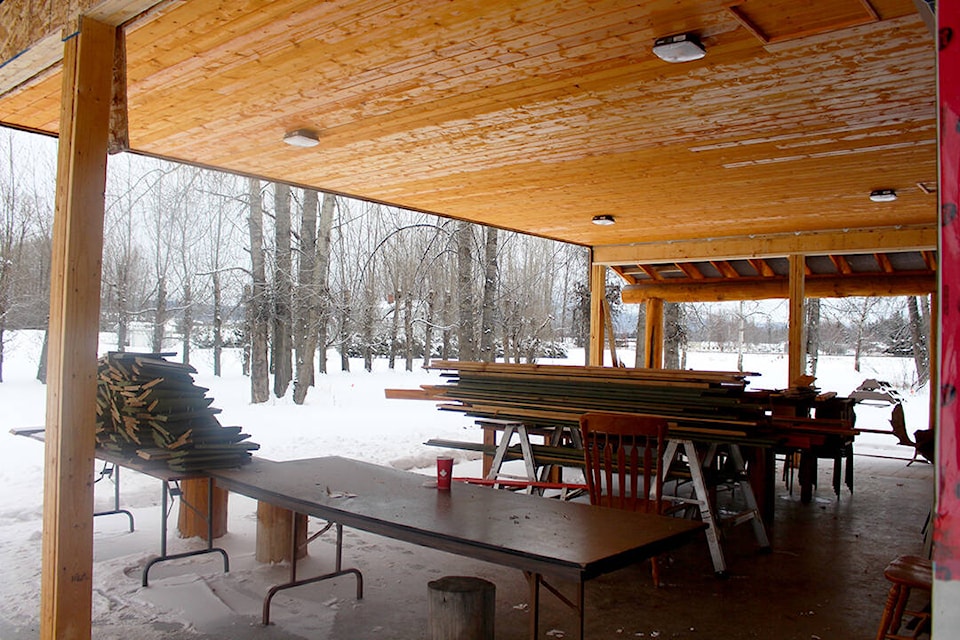Work is underway to expand the interior footprint of the A Rocha Buck Creek Canfor Hatchery and Nature Centre.
And that’s being done by closing in the covered outdoor space that has been used for various educational and other purposes.
“We hope that this can be another venue for community meetings, workshops and gatherings on top of the ones we host,” said nature centre coordinator Cindy Verbeek of the 20 foot by 30 foot outside space now being converted into an inside space.
“The space will become an office with three stations for the year round staff and an indoor classroom for year round school and nature camp programming.”
The work is being financed by a $105,000 grant received by the Bulkley Valley Community Foundation last fall.
“We should be able to do the build with this amount so have not solicited additional funding. If need be we will make due with existing furniture/storage space until we can fundraise more but I think we can do it with what we have,” said Verbeek.
The centre hopes the work will be done by the end of April or early May.
This is the fourth substantial construction project undertaken by the hatchery and nature centre since the days it operated from a tent enclosure.
A 20 foot by 30 foot hatchery was followed by a 30 foot by 30 foot indoor space, then the outdoor space and now framing in the outdoor space.
And while the nature centre and hatchery expands its physical presence, it is undertaking new public education initiatives as well as continuing its hatchery operations.
Jan. 17 saw the first of a series of speakers under the Knowing Nature Speaker series in which local people will pass along their knowledge and experiences within the watershed area.
It’s being financed by a grant from CN and one session is being planned each month into June.
And each Wednesday the Living Lightly group meets to share ideas and provide support to people wanting to have a more sustainable lifestyle.
Very significant this year are the 9,400 coho eggs that have been collected, a well above average number for the hatchery.
“Other years we haven’t found as many salmon for egg collection. In our experience, it was an excellent return of coho this past fall,” added Sarah Sutton, an administrative assistant at the centre.
Away from the centre and hatchery location, work is continuing to build relationships with other groups and landowners.
Some of that involves planting primarily willow stakes along river and stream banks to prevent ongoing erosion as their roots take hold.
“We also have used low-tech restoration techniques such as driving tree stumps into the bank and weaving willow stakes among them to provide added structure until the willows grow (this type of structure will also eventually decompose naturally and improve soil composition of the bank),” said Sutton.
Both Sutton and Verbeek said a key to the hatchery and centre’s conservation and educational goals is speaking and working with others.
“As a small non-profit, it’s our goal to partner with other organizations for practical and financial reasons,” said Verbeek.
